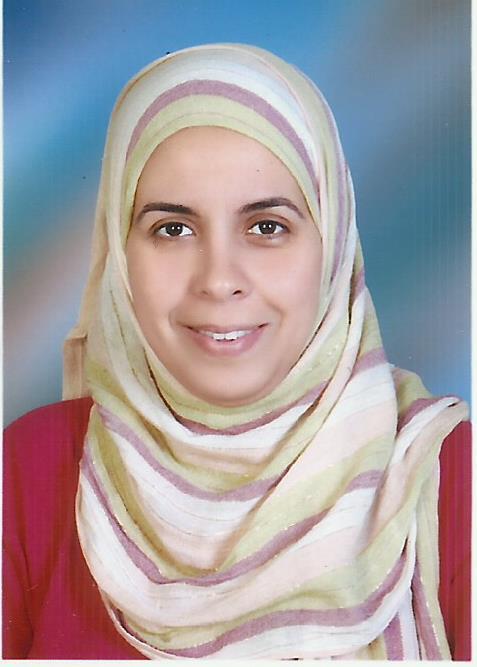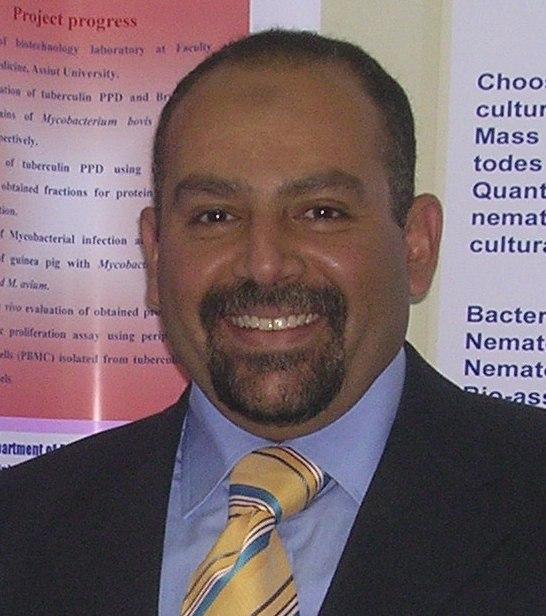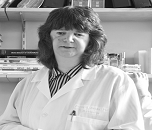Theme: Analyzing The Innovation & Future Trends In Clinical Microbiology
Clinical Microbiology 2015
After the success of Clinical Microbiology 2012, Clinical Microbiology 2013 and with the tremendous response of Clinical Microbiology 2014 ,OMICS Group International is glad to announce 4th International conference on Clinical Microbiology & Microbial Genomics (Clinical Microbiology-2015) during October 05-07, 2016 at Philadelphia, USA.
OMICS International Organises 300 International Conferences Every Year across USA, Europe & Asia with support from 1000 more scientific societies and Publishes 500+ Open access journals which contains over 50000 eminent personalities, 50,000 reputed scientists as editorial board members and 5 million readers.
The Global microbiology market is growing due to increase in prevalence of pathogenic diseases, growth in discovery of mutating and adapting bacterium, and the growing need for speedy microbiological testing methods. The report Global Microbiology Market forecast for 2018’ analyzes the market by segments such as instruments and reagents. These two segments experienced a positive growth till 2013, with a market value of $3.55 billion, comprising of $2.99 billion for reagents and $0.55 billion for instruments. It is expected to grow at a CAGR of 6.2%.
The Americas commanded the largest share 42% of the Global Microbiology Market at an estimated $1485.02 million in 2013 and are expected to reach $1932.8 million by 2018, at a CAGR of 5.6% from 2013 to 2018. The report “North American Microbiology Market forecast for 2018 “analyzes the market by two segments such as instruments and reagents.
This meeting will focus in particular on the most current research related to the laboratory diagnosis of human and animal infections and the role of the laboratory in both the management of infectious diseases and the elucidation of the epidemiology of infections, the latest developments in clinical microbiology and immunology, providing the current state of knowledge in the field, as well as balanced, thought-provoking perspectives on controversial issues.
1.Insights and Trends in Microbiology
The evolution of resistant strains is a natural phenomenon which occurs once microorganisms replicate themselves or when resistant traits are exchanged between them. The use and misuse of antimicrobial drugs enhances the emergence of drug-resistant strains. Designing safe and effective drugs specifically antiviral is difficult, because viruses use the host's cells to replicate. Recent reports showed that infection in human can occur by close contact with pets (dogs and cats). As cultural detection of some bacteria like Arcobacter is time consuming and not confirmatory, various DNA based protocols have been developed for rapid and accurate identification of Arcobacter species. phenotypic methods have been described for typing bacteria (including bio typing, serotyping and phage typing schemata), in the case of phage- and serotyping schemes, not widely available. Molecular epidemiology is the understanding of the pathogenesis of disease by identifying specific pathways, genes and molecules that influence the risk of developing disease. Reverse Zoonosis refers to Infectious diseases that are found in humans which can be transmitted to animals. Bacteria and viruses that are deadly to one type of creature can evolve quickly to infect another. Increasing human population, travel, and the global food business increase the likelihood that viruses will jump from animals into humans, the same factors ensure the reverse spread as well – often with dire consequences for zoological parks and wild and domestic animals. Hence the central element of modern technology treatment is the Nano patch™ array itself which consists of a 1 cm2 square of silicon with ~20,000 micro projections on its surface - invisible to the naked eye.
Bacterial profiling is the classification of bacteria based on experiments, resulting quick identification. This system is developed for quick identification of clinically relevant bacteria and hence only known bacteria can be identified. The predominant proteomic technologies that have been explored for bacterial identification and characterization include matrix-assisted laser desorption/ionization time-of-flight mass spectrometry (MALDI-TOF-MS); electro spray ionization mass spectrometry (ESI-MS); surface-enhanced laser desorption/ionization (SELDI) mass spectrometry; one- or two-dimensional sodium dodecyl sulfate–polyacrylamide gel electrophoresis (SDS-PAGE); or the combination of mass spectrometry, gel electrophoresis, and bioinformatics. In the context of plants, two symbiotic systems have been actively studied for many years. One is arbuscular mycorrhizal (AM) symbiosis and the other is root nodule (RN) symbiosis. Oral bacteria have evolved mechanisms to sense their environment and evade or modify the host. Bacteria occupy the ecological niche provided by both the tooth surface and gingival epithelium. There is evidence of bacteria resistant to both biocides and antibiotics occurring in hospitals, and this resistance can be transferred to other bacterial strains. The plasmids can be transferred between prokaryotes through horizontal gene transfer.
The pharmaceutical industry is currently grappling with a tremendous number of potential drug targets against infectious diseases identified through sequence data for the human genome and many important pathogens. During the winter of 2002 through the spring of 2003, WHO received reports of >8,000 SARS cases and nearly 800 deaths. No one knows if SARS-CoV transmission will recur, but it is important to be prepared for that possibility. Early recognition of cases and application of appropriate infection control measures will be critical in controlling future outbreaks. An experimental Ebola vaccine shows promise in an early clinical trial, but requires much more testing, researcher’s report. The trial included 120 healthy adults in China who received either a low or high dose of the vaccine, or a placebo. Twenty-eight days later, 38 of 40 people in the low-dose group and all 40 of those in the high-dose group showed an immune response to the vaccine. No serious side effects occurred among the participants who received the vaccine. Diagnosis can be done by direct detection of virus in clinical specimens or by detecting the presence of Abs’ to the virus in serum (acute infection is diagnosed by the presence of IgM antibody or by a 4X rise in IgG titer between acute and convalescent sera.
Parasites have been one of the most common opportunistic infections (OIs) and one of the most frequent causes of morbidity and mortality. Malaria parasites have evolved so that they can evade the human immune response and survive in the population year after year. The genetic mechanisms they use to achieve this are complex and have confounded malaria vaccine production efforts for decades. The gradual advances in our understanding of host parasite interactions have made an effective vaccine a realistic goal. There are approximately 1.5 million different species of fungi on Earth, but only about 300 of those are known to make people sick.1,2 Fungal diseases are often caused by fungi that are common in the environment.
5. Clinical Veterinary Microbiology
This view of disease at the population level differs from the approach traditionally taken by veterinary practitioners, who are principally concerned with the health status of the individual animal. Over 77 million dogs and 93 million cats share our households in the United States. Zoonotic protozoal parasites, including toxoplasmosis, Chagas' disease, babesiosis, giardiasis, and leishmaniasis, can cause insidious infections, with asymptomatic animals being capable of transmitting disease.Leishmania species and Trypanosoma cruzi are regional and have low prevalences in the United States but are significant sources of human disease worldwide and are reemerging and expanding their geographic distribution in companion animals in the United States. In Africa, monkey pox has killed between 1 percent and 10 percent of people who get it. However, this risk would probably be lower in the United States, where nutrition and access to medical care are better.
The study of the molecular and cellular components that comprise the immune system, including their function and interaction, is the central science of immunology. Autoimmune diseases are a broad range of related diseases in which a person’s immune system produces an inappropriate response against its own cells, tissues and/or organs, resulting in inflammation and damage. There are over 80 different autoimmune diseases, and these range from common to very rare diseases. Cell-based immunotherapies are proven to be effective for some cancers. Immune effector cells such as lymphocytes, macrophages, dendritic cells, natural killer cells (NK Cell), cytotoxic T lymphocytes (CTL), etc., work together to defend the body against cancer by targeting abnormal antigens expressed on the surface of the tumor due to mutation. Allergies and sensitivities have increased radically in our lifetime — acute, chronic and subclinical allergies are all up — so much so that by some estimates over 60 million Americans now suffer from allergies and millions more from sensitivities.
7. Microbial Genomics and Cellular Microbiology
During the past 10 years, genomics-based approaches have had a profound impact on the field of microbiology and our understanding of microbial species. Because of their larger genome sizes, genome sequencing efforts on fungi and unicellular eukaryotes were slower to get started than projects focused on prokaryotes; however, today there are a number of genome sequences available from both of these groups of organisms that have led to significant improvements in overall sequence annotation and also shed considerable light on novel aspects of their biology. According to the World Health Organization more than 1 million people acquire a sexually transmitted infection (STI) every day and an estimated 500 million people become ill with Chlamydia, gonorrhea, syphilis or trichomoniasis every year. Approximately 40% of the bacterial species that have been targeted for genome analysis represent important human pathogens. Approximately 40% of the bacterial species that have been targeted for genome analysis represent important human pathogens. Using a whole-genome shotgun approach, Tyson et al. (2004) were able to reconstruct two almost complete genome sequences of Leptospirillum group II and Ferro plasma type II and the partial sequence of three other species from a low-complexity acid mine drainage biofilm growing underground within a pyrite ore body.
8. Genome Plasticity and Infectious Diseases
Globally, dengue is most common arboviral disease, with 40% of the world’s population living in areas with dengue virus transmission. Of the estimated 390 million infections and 100 million cases annually, a small proportion of these cases progress to severe dengue. The species of mosquito that is responsible for spreading yellow fever is Aedes Aegypti and is a different species from the anopheles mosquito that transmits malaria. There is no drug available to cure yellow fever hence treatment is aimed at symptomatic relief. Overall about 5% of patients die. Those who recover do so completely and are immune thereafter. A remarkable number of effectors molecules capable of blocking pathogen transmission in mosquitoes have been investigated. For example, several mechanisms exist for interfering with different developmental stages of malaria parasites in mosquitoes (Nirmala & James 2003).
9. Vaccines against Infectious Diseases
Infectious diseases remain one of the main causes of death and economic losses in animals despite the fact that prophylactic vaccination has been extremely successful in disease prevention. Plant based veterinary vaccine studies have addressed protection issues in model animals and, more interestingly, some of them have examined the relevant challenge model in the specific species of interest. There has been substantial progress in raising antigen expression to levels that are practical for the delivery of required oral doses. Before rotavirus vaccine, rotavirus disease was a common and serious health problem for children in the United States. Almost all children in the United States had at least one rotavirus infection before their 5th birthday. All attempts at HIV-1 vaccination have failed for the last 30 years. These modeling studies provide us with some very concrete suggestions as to the types of vaccine regimens that might work best to induce broadly neutralizing antibodies. Institutes like Ragon Institute, the International AIDS Vaccine Initiative, the National Institutes of Health, and the Scripps Center for HIV/AIDS Vaccine Immunology and Immunogen Discovery are involved in funding of this research.
10. Microbial and Biochemical Technology
Chemical and biochemical engineers engage in a wide variety of activities that benefit the global community. Fuel cells, solar energy, and bio renewable fuels (e.g., biodiesel or ethanol) fall within the realm of chemical engineering. Bioremediation occurs when prokaryotes clean up a polluted environment through the natural breakdown of pollutants. Bioremediation can remove oil, some pesticides, fertilizers, and toxic chemicals, such as arsenic, from the environment. Germicidal UV irradiation may be an effective approach for reducing fungal contamination within AHUs (air-handling units). The use of germicidal UV lamps in AHUs resulted in significantly lower levels of fungal contamination in the fiberglass insulation lining of study floor AHUs than in the insulation of control floor units. Loop-mediated isothermal amplification (LAMP) of DNA has emerged as an alternative to the use of PCR-based methods not only in food safety testing but also in a wide array of application. There are many biogeochemical cycles that are currently being studied for the first time as climate change and human impacts are drastically changing the speed, intensity, and balance of these relatively unknown cycles. These newly studied biogeochemical cycles include the mercury cycle, and the human-caused cycle of atrazine, which may affect certain species.
Clinical Microbiology-2015
Clinical Microbiology-2015 is an opportunity or a platform to focus and analyze recent innovations and challenges in the field of Clinical Microbiology and Microbial genomics. Thus contributing both academicians and business partners to grow and spread their research and products respectively. Clinical Microbiolog-2015 welcomes attendees, presenters, and exhibitors from all over the world to Philadelphia USA on October05-07, 2015.Clinical microbiology and infections threating most of laboratories or hospital setups deal with the prevention, diagnosis and treatment of infectious diseases caused by four kinds of microorganisms i.e. bacteria, fungi, parasites and viruses. Medical microbiology can also be integrated as science of studying various clinical applications of microbes for the improvement of health. Microbiology diseases caused by pathogens that may be exogenous (acquired from an external source; environmental, animal or other people, e.g. Influenza) or endogenous (from normal flora e.g. candidiasis).In microbiology laboratory, culture is the primary method used for isolating infectious disease for study in the laboratory. Tissue or fluid samples are tested for the presence of a specific pathogen, which is determined by growth in a selective or differential medium. Microbiological diagnosis involves microbial culture, microscopy, biochemical tests and genotyping. Other less common techniques (such as X-rays, CAT scans, PET scans or NMR) are used to produce images of internal abnormalities resulting from the growth of an infectious agent. Infectious disease once has been diagnosed and identified; suitable treatment options must be assessed by the physician and consulting medical microbiologists. Clinical Infectious diseases treated with antibacterials (often called antibiotics) whereas fungal and viral infections are treated with antifungals and antivirals respectively. A broad class of drugs known as antiparasitics are used to treat parasitic diseases. In Clinical Biochemistry laboratory, fast and relatively simple biochemical tests can be used to identify infectious agents. Clinical microbiology is not only about diagnosing and treating disease, it also involves the study of beneficial microbes. Clinical infections can be treated and treatments can be developed from microbes, as demonstrated by Alexander Fleming's discovery of penicillin as well as the development of new antibiotics from the bacterial genus Streptomyces among many others.
Conference Highlights
- Insights And Trends In Microbiology
- Clinical Bacteriology
- Clinical Virology
- Parasitology And Mycology
- Clinical Veterinary Microbiology
- Clinical Immunology
- Microbial Genomics And Cellular Microbiology
- Genome Plasticity And Infectious Diseases
- Vaccines Against Infectious Diseases
- Microbial And Biochemical Technology
To share your views and research, please click here to register for the Conference.
To Collaborate Scientific Professionals around the World
| Conference Date | October 05-07, 2015 | ||
| Sponsors & Exhibitors |
|
||
| Speaker Opportunity Closed | Day 1 | Day 2 | Day 3 |
| Poster Opportunity Closed | Click Here to View | ||
Useful Links
Special Issues
All accepted abstracts will be published in respective Our International Journals.
- Clinical Microbiology: Open Access
- Journal of Microbial and Biochemical Technology
- Journal of Medical Microbiology & Diagnosis
Abstracts will be provided with Digital Object Identifier by



























